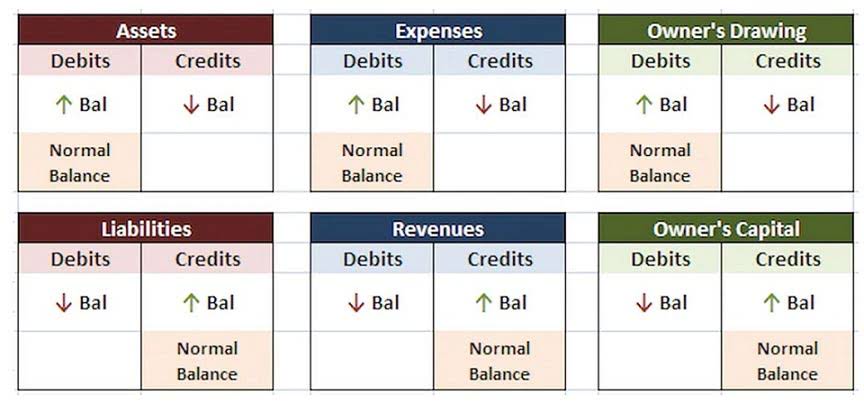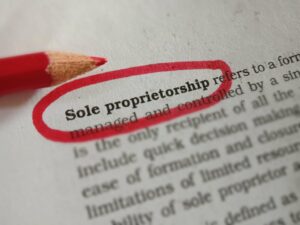Debits and Credits Normal Balances, Permanent & Temporary Accounts

The debit or credit balance that would be expected in a specific account in the general ledger. For example, asset accounts and expense accounts normally have debit balances. Revenues, liabilities, and stockholders’ equity accounts normally have credit balances.
- A trial balance is an important step in the accounting process, because it helps identify any computational errors throughout the first three steps in the cycle.
- For accounts payable, the usual trend for the normal balance is usually credit.
- Without a dollar amount, it would be impossible to record information in the financial records.
- As we can see from this expanded accounting equation, Assets accounts increase on the debit side and decrease on the credit side.
- We also know that the employment activities performed by an employee of a company are considered an expense, in this case a salary expense.
Both FASB and IASB cover the same topics in their frameworks, and the two frameworks are similar. The conceptual framework helps in the standard-setting process by creating the foundation on which those standards should be based. It can also help companies figure out how to record transactions for which there may not currently be an applicable standard. Though there are many similarities between the conceptual framework normal balance of accounts under US GAAP and IFRS, these similar foundations result in different standards and/or different interpretations. When a publicly traded company in the United States issues its financial statements, the financial statements have been audited by a Public Company Accounting Oversight Board (PCAOB) approved auditor. The PCAOB is the organization that sets the auditing standards, after approval by the SEC.
Credit for normal balance
When the FASB creates accounting standards and any subsequent clarifications or guidance, it only has to consider the effects of those standards, clarifications, or guidance on US-based companies. This means that FASB has only one major legal system and government to consider. This means that interpretation and guidance on US GAAP standards can often contain specific details and guidelines in order to help align the accounting process with legal matters and tax laws. This way, the transactions are organized by the date on which they occurred, providing a clear timeline of the company’s financial activities. Because the balances in the temporary accounts are transferred out of their respective accounts at the end of the accounting year, each temporary account will have a zero balance when the next accounting year begins. This means that the new accounting year starts with no revenue amounts, no expense amounts, and no amount in the drawing account.

Revenues and gains are recorded in accounts such as Sales, Service Revenues, Interest Revenues (or Interest Income), and Gain on Sale of Assets. These accounts normally have credit balances that are increased with a credit entry. For reference, the chart below sets out the type, side of the accounting equation (AE), and the normal balance of some typical accounts found within a small business bookkeeping system. So for example there are contra expense accounts such as purchase returns, contra revenue accounts such as sales returns and contra asset accounts such as accumulated depreciation. The revenues a company earns from selling the products are usually credit in accounts payables on the normal balance.
What Is Normal Balance In Accounting
We can illustrate each account type and its corresponding debit and credit effects in the form of an expanded accounting equation. You will learn more about the expanded accounting equation and use it to analyze transactions in Define and Describe the Expanded Accounting https://www.bookstime.com/blog/know-the-basics-accounting-versus-bookkeeping Equation and Its Relationship to Analyzing Transactions. Normal balance refers to the expected side or category where an account balance should appear. It is a fundamental concept in accounting that helps ensure accuracy and consistency in financial reporting.

Having too much inventory ties up valuable financial resources and can lead to increased storage and holding costs. On the other hand, not having enough inventory can result in lost sales opportunities and dissatisfied customers. Balancing inventory is particularly important because it ensures that a company has the right amount of goods available to meet customer demand without incurring unnecessary costs or shortages. By having many revenue accounts and a huge number of expense accounts, a company will be able to report detailed information on revenues and expenses throughout the year. Asset, liability, and most owner/stockholder equity accounts are referred to as permanent accounts (or real accounts). Permanent accounts are not closed at the end of the accounting year; their balances are automatically carried forward to the next accounting year.
Accounts Payable Debit or Credit: What is a Normal Balance?
Temporary accounts (or nominal accounts) include all of the revenue accounts, expense accounts, the owner’s drawing account, and the income summary account. Generally speaking, the balances in temporary accounts increase throughout the accounting year. At the end of the accounting year the balances will be transferred to the owner’s capital account or to a corporation’s retained earnings account.

The SEC not only enforces the accounting rules but also delegates the process of setting standards for US GAAP to the FASB. Here’s a simple table to illustrate how a double-entry accounting system might work with normal balances. So, if a company takes out a loan, it would credit the Loan Payable account. This is recorded on the normal balance as a debit for the company according to the double-entry bookkeeping method. Once all balances are transferred to the unadjusted trial balance, we will sum each of the debit and credit columns.
Let’s now take a look at the T-accounts and unadjusted trial balance for Printing Plus to see how the information is transferred from the T-accounts to the unadjusted trial balance. Failing to regularly review and adjust reorder points can throw off inventory balance as well. Reorder points need continuous evaluation based on factors such as seasonality trends or changes in customer demand patterns. When businesses fail to accurately monitor incoming and outgoing goods, they may lose sight of what they actually have on hand, leading to discrepancies between physical counts and recorded values.

Leave a Comment